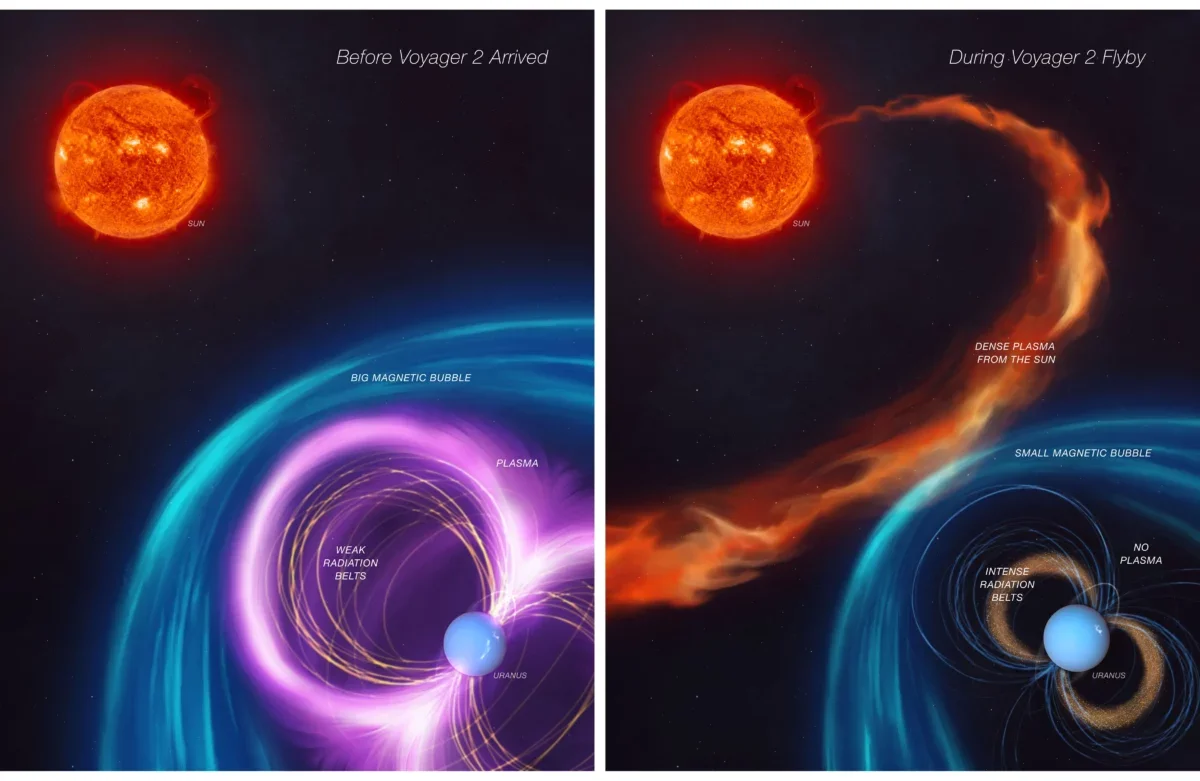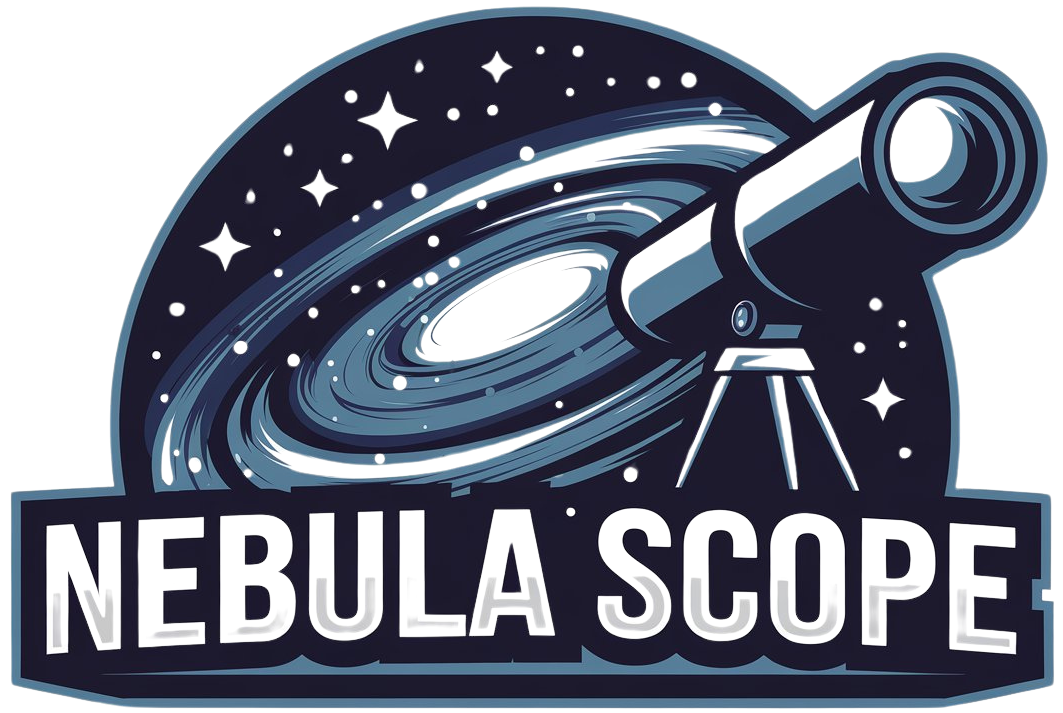Again to Article Listing
A blast of sun radiation simply earlier than Voyager 2’s arrival in 1986 can have misled researchers for many years.
Voyager 2 snapped this shot of Uranus when the craft handed the ice large in 1986. Credit score: NASA/JPL-Caltech
In 1986, Voyager 2 flew via the ice large Uranus. It was once humanity’s first close-up view of the outer planet, and it stays the nearest any spacecraft has ever come. In this travel, the spacecraft discovered 10 up to now undiscovered moons, two rings, and a actually abnormal magnetic box that has baffled scientists ever since.
Many of the different planets have magnetic fields that align more or less with their poles, which level up and down, out of the airplane of the sun machine. However Uranus is exclusive in that it spins on its aspect, like a ball rolling across the Solar. Even given this strangeness, its magnetic box doesn’t appear to originate at its heart, however someplace some distance to the south, most likely up to a 3rd of the planet away. And it’s tilted via 59 levels.
What’s extra, Voyager 2 famous a surprisingly intense magnetosphere all the way through its passing, with sturdy radiation belts and a abnormal loss of plasma. Researchers had been puzzling over those effects for the previous 40 years.
Now, a brand new learn about printed Nov. 11 in Nature Astronomy has revisited the Voyager 2 information and found out that Uranus was once in fact struggling a blast of sun climate, hanging it in a state the researchers estimate represents Uranus best 4 % of the time, and reframing what little we learn about our far away icy neighbor.
Striking it in viewpoint
Jamie Jasinski, from NASA’s Jet Propulsion Laboratory in California, is the lead writer of the brand new learn about. Within the paper, he and co-authors indicate that earlier research used Voyager 2’s measurements of the sun wind because it was once crossing Uranus’ bow surprise, the outer fringe of its magnetosphere, to border the remainder of the observations. However taking a look on the spacecraft’s measurements, it’s transparent that the planet — and spacecraft — had been swamped via a blast of sun wind at simply that point. By way of taking a look on the large image, some 8 months of information, it was once transparent to them that this isn’t the norm for Uranus, and explains why its magnetosphere gave the impression so ordinary.
The planet is and stays tilted, which reasons some strangeness within the magnetosphere. However the inexplicable phase for researchers has been the loss of noticed plasma. Uranus’ moons (we now know of 28, together with 5 massive ones) had been anticipated to act like different outer sun machine moons: icy and more likely to spew ions (charged debris) and their dissociated electrons into the planetary group. However Voyager 2 didn’t see any of this subject matter.
The spacecraft did see intense electron radiation belts, 2d best to mighty Jupiter’s. However how those belts got here to be and persist, with out a supply of plasma, has likewise mystified astronomers.
A blast of sun wind solves each those puzzles. Like a gust of wind on Earth reasons a flag to billow and snap, the sun wind can compress and squash down a planet’s magnetosphere. “In the case of Uranus, we calculated that the increase in pressure before the Voyager 2 flyby could have caused a five-fold reduction in the volume of the dayside magnetosphere,” stated Jasinski in a temporary.
The squashing impact can in flip force electrons into the radiation belts and push plasma out of the machine. Astronomers have noticed precisely this impact at each Earth and Saturn, lending credibility to their concept.

This artist’s thought displays Uranus’ magnetosphere seemed previous to Voyager 2’s arrival in early 1986 at left. At proper is the bizarre scenario that resulted in the ordinary habits the spacecraft recorded when it arrived. Credit score: NASA/JPL-Caltech
Wishes extra information
The authors warn, then again, that whilst their new framing of Uranus being in an bizarre state all the way through Voyager 2’s flyby is smart, it stays that the spacecraft has equipped the one up-close information we’ve ever accomplished from the ice large.
A devoted project to Uranus with an orbiter and probe is within the making plans phases, and would examine the planet and its moons for 4.5 years. The sort of project was once deemed easiest precedence via the newest US Nationwide Academies’ planetary decadal survey, which guides investment and technique for NASA and the Nationwide Science Basis, amongst others. However given the timing of the planet’s orbit and seasons, it must release throughout the subsequent decade, and time and budgets are already final in on this type of plan.
Astronomers are finding hundreds of worlds past our sun machine. However there are nonetheless mysteries within sight. Uranus, studied best in brief and from afar, would possibly but hang surprises for us.

